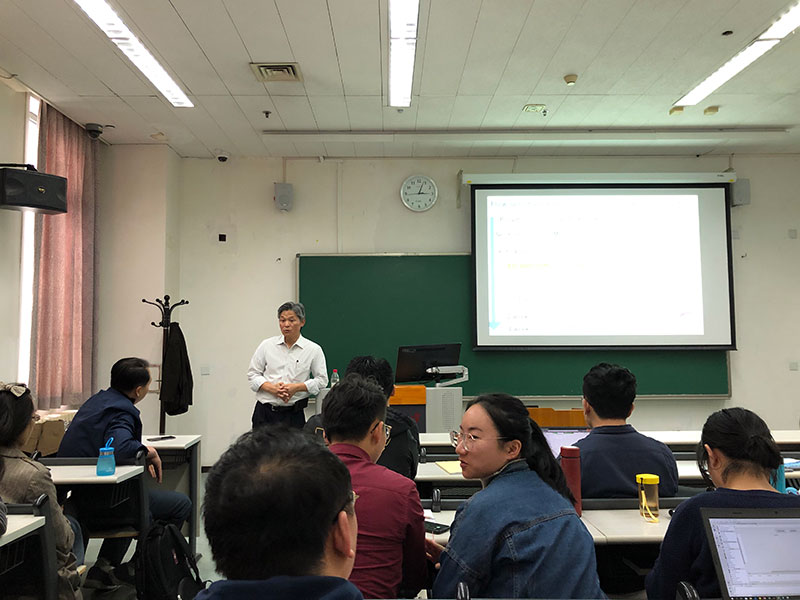At 2 pm on November 1, Prof. Zhifei Dai (Department of Biomedical Engineering of Peking University) invited Prof. Hanjoong Jo (Emory University) to give an lecture which was entitled “Flow -sensitive genes, Endothelial function and Atherosclerosis: Therapeutics and Delivery”. Teachers and students of the Department of Biomedical attended the lecture, which was hosted by Prof. Dai Zhifei.

Atherosclerosis and its implications are the leading cause of death worldwide. It is well-known that atherosclerosis occurs in arterial regions of branching points and curves, suggesting a correlation between atherosclerosis and disturbed flow conditions. However, it was unknown whether disturbed flow is responsible for atherosclerosis. In 2009, Hanjoong and his lab mates developed the Partial Carotid Ligation Model. With this model, they directly demonstrated that disturbed blood flow can actually induce atherosclerosis in the presence of additional risk factors such as hypercholesterolemia in ApoE mice (Nam 2009 Am J Physiology). This model has made it possible to study the role of disturbed flow from the gene and molecular level to all the way to the plaque development (something that cannot be done in vitro). These studies enabled them to discover novel mechanosensitive genes and miRNAs that have been the subject of intense studies in their lab and others.
The miR-712 is the first mechanosensitive miRNA that has been shown to play a critical role in atherosclerosis and anti-miR-712 has been shown to prevent atherosclerosis. In collaboration with Prof. Katherine W. Ferrara (Stanford University), they developed multifunctional lipid nanoparticles to facilitate molecular targeting and anti-miR-712 delivery to prevent atherosclerosis (Kherolomoom et al ACS Nano 2015).
Expression of KLK10 can effectively inhibit atherosclerosis. They collaborated with Prof. Dai and established a simple but highly effective technology for imaging-guided KLK10 gene delivery to mouse artery combining ultrasound imaging, microbubbles and AAV gene vector.